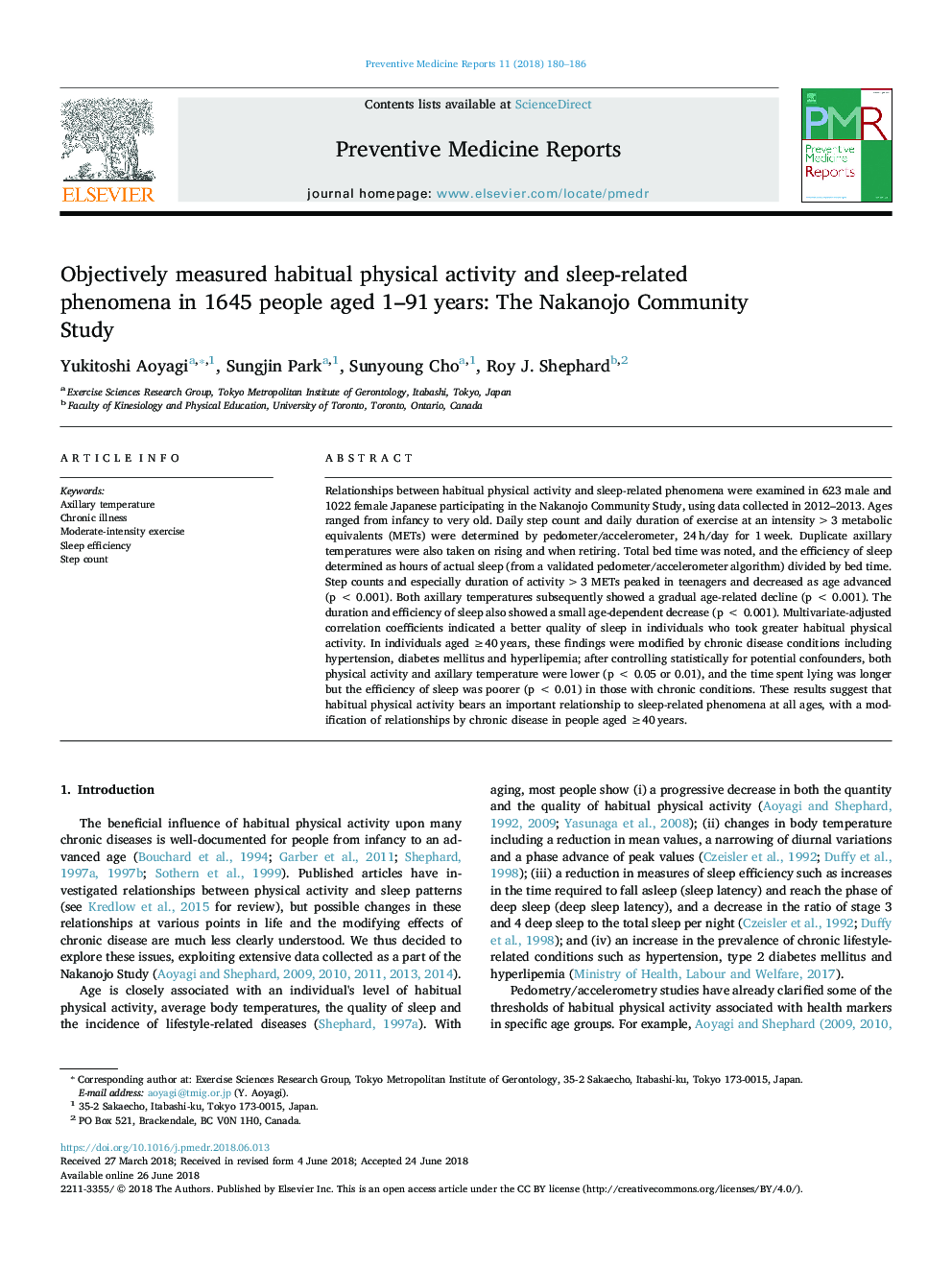| Article ID | Journal | Published Year | Pages | File Type |
|---|---|---|---|---|
| 8818492 | Preventive Medicine Reports | 2018 | 7 Pages |
Abstract
Relationships between habitual physical activity and sleep-related phenomena were examined in 623 male and 1022 female Japanese participating in the Nakanojo Community Study, using data collected in 2012-2013. Ages ranged from infancy to very old. Daily step count and daily duration of exercise at an intensity >3 metabolic equivalents (METs) were determined by pedometer/accelerometer, 24â¯h/day for 1â¯week. Duplicate axillary temperatures were also taken on rising and when retiring. Total bed time was noted, and the efficiency of sleep determined as hours of actual sleep (from a validated pedometer/accelerometer algorithm) divided by bed time. Step counts and especially duration of activity >3 METs peaked in teenagers and decreased as age advanced (pâ¯<â¯0.001). Both axillary temperatures subsequently showed a gradual age-related decline (pâ¯<â¯0.001). The duration and efficiency of sleep also showed a small age-dependent decrease (pâ¯<â¯0.001). Multivariate-adjusted correlation coefficients indicated a better quality of sleep in individuals who took greater habitual physical activity. In individuals aged â¥40â¯years, these findings were modified by chronic disease conditions including hypertension, diabetes mellitus and hyperlipemia; after controlling statistically for potential confounders, both physical activity and axillary temperature were lower (pâ¯<â¯0.05 or 0.01), and the time spent lying was longer but the efficiency of sleep was poorer (pâ¯<â¯0.01) in those with chronic conditions. These results suggest that habitual physical activity bears an important relationship to sleep-related phenomena at all ages, with a modification of relationships by chronic disease in people aged â¥40â¯years.
Related Topics
Health Sciences
Medicine and Dentistry
Public Health and Health Policy
Authors
Yukitoshi Aoyagi, Sungjin Park, Sunyoung Cho, Roy J. Shephard,
